Naoyoshi Shiotani Interview
January 24, 2016 · 0 comments
By Andrew Osmond.
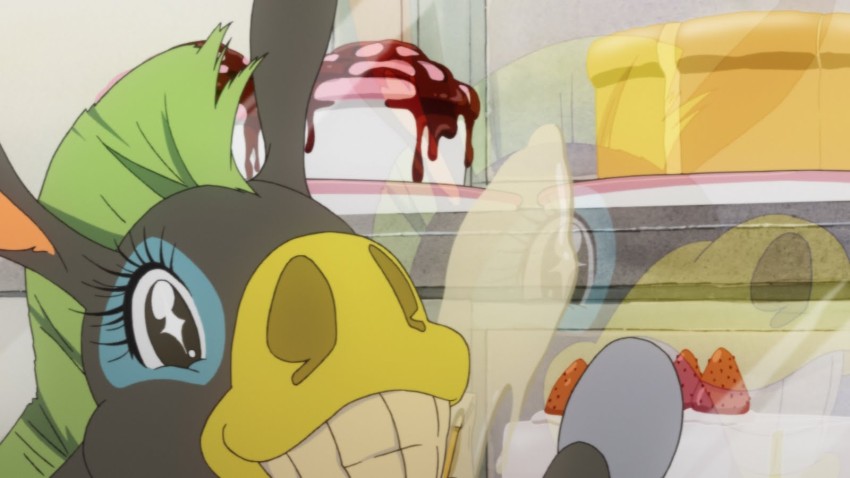 Last December’s “Christmas Market” edition of the Hyper Japan festival brought over an anime director with a Santa-baffling CV, nasty and nice. On the one side, Naoyoshi Shiotani has helmed the Psycho-Pass franchise, blending horror, action and SF. He’s been with the title through the original 2012 series, its TV sequel (Psycho-Pass 2, just acquired by Anime Limited) and the Psycho-Pass cinema film which graced Scotland Loves Anime. So he’s a hardboiled guy who bathes in blood, right?
Last December’s “Christmas Market” edition of the Hyper Japan festival brought over an anime director with a Santa-baffling CV, nasty and nice. On the one side, Naoyoshi Shiotani has helmed the Psycho-Pass franchise, blending horror, action and SF. He’s been with the title through the original 2012 series, its TV sequel (Psycho-Pass 2, just acquired by Anime Limited) and the Psycho-Pass cinema film which graced Scotland Loves Anime. So he’s a hardboiled guy who bathes in blood, right?
Not so fast. Confusingly, there’s another side to Shiotani, who creates cuddly animals for children’s fantasies and sweet comedies. This Shiotani contributed a sad toy sheep, Cotton, to the CG fantasy Oblivion Island, and a boisterous miniature donkey to his director debut, Tokyo Marble Chocolate (to be released soon by Anime Limited). For anyone hoping, there aren’t really any miniature donkeys – Shiotani made the breed up.
This mystery needs investigating. Is Shiotani a savage or a softie? “I love cute fluffy things!” he laughs. “I’m thinking, ‘I can come up with Totoro!’ – but I don’t get the opportunity to do Totoro.” But Shiotani says, he’s found his own ways to strike a balance through, er, J-pop idols.
“When I put so much of myself into making a really dark work like Psycho-Pass,” says Shiotani, “it takes a lot out of you, it tips your balance to the darker side. So I need to re-balance myself and the thing that got my balance right was the Japanese idol group Momiro Clover Z. Listening to them really lifted me up, so when I was killing people, with so much bloodshed, it got my mood right. The story got out that I was a fan of Momiro Clover Z and it reached the group themselves. I was able to meet them, so it was worth saying I liked them!”
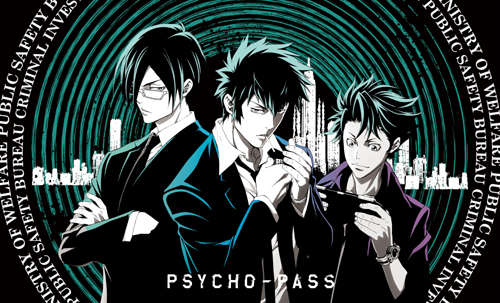 Shiotani adds that when he supervised the voice-recording for Psycho-Pass, full of blood-curdling yells and death-rattles, he’d prepare for the day by listening to a happy tune in the six and a half-minute journey from the station to the recording studio. “I’d get into a really good mood, and then get into the bloody stuff.”
Shiotani adds that when he supervised the voice-recording for Psycho-Pass, full of blood-curdling yells and death-rattles, he’d prepare for the day by listening to a happy tune in the six and a half-minute journey from the station to the recording studio. “I’d get into a really good mood, and then get into the bloody stuff.”
The director argues such balancing acts are healthy creatively. “If you’re only focusing in one direction, you lose perspective, whereas if you have both sides in balance, you can see better.” He points out that also makes good drama; tears and bitterness strengthen a comedy, while happy scenes make a tragedy cut deeper. Shiotani believes in playing audiences, shifting their emotions from one side to another. Colours help; red, for example, mean passion or aggression, blue is cool or cold.
Of course, Psycho-Pass has a cerebral side as well. It stands in a long-line of SF futures where human liberties have been eroded by society and technology. Shiotani acknowledges the influence of such works: Orwell’s Nineteen-Eighty-Four, Minority Report, Gattaca. “In a way, Psycho-Pass is the accumulation of things that we love,” he says. However, the inspiration for the show’s antagonists, the charismatic psychos like Makishima, was less obvious.
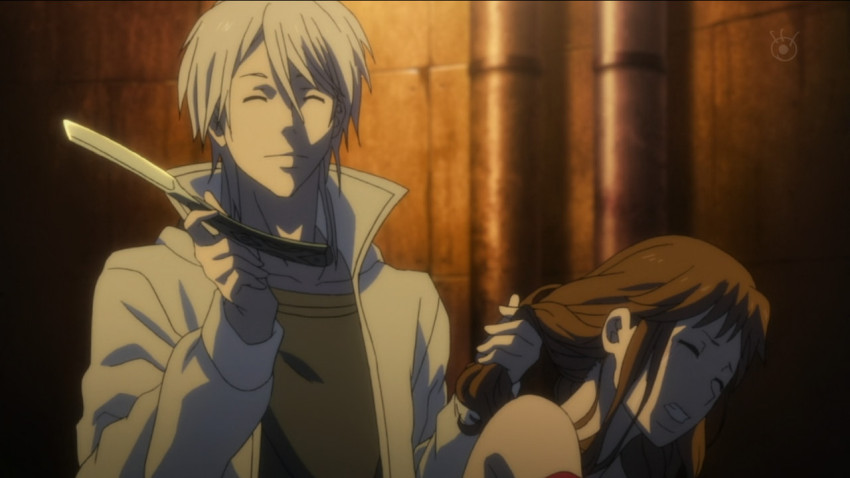 “It was the Joker in The Dark Knight,” Shiotani says. (That’s the version played by Heath Ledger, though he echoes other Jokers such as the one in The Killing Joke strip.) “He’s definitely different, he’s weird, and he’s removed from all the other characters in that world… but if you listen to him, you kind of think: ‘He’s actually not wrong.’ The inspiration comes from that kind of character.”
“It was the Joker in The Dark Knight,” Shiotani says. (That’s the version played by Heath Ledger, though he echoes other Jokers such as the one in The Killing Joke strip.) “He’s definitely different, he’s weird, and he’s removed from all the other characters in that world… but if you listen to him, you kind of think: ‘He’s actually not wrong.’ The inspiration comes from that kind of character.”
Shiotani has been creating most of his cutthroat killers and cuddly critters for Production I.G, which made the first Psycho-Pass and the movie, though Psycho-Pass 2 was animated by Tatsunoko. The future director joined I.G fresh from animation school more than a decade ago. When he first came to the studio, Production I.G was becoming a globally-known brand, thanks to the international success of Ghost in the Shell. Shiotani remembers an unexpected visitor at the studio soon after he joined.
“Somebody rang the bell and there was a foreigner standing at the door. We were thinking it was just some random foreigner who was interested in anime… He said that he’d really like us to help with his new film, if we could put animation together, and everybody had a quick look – who’s this person? Oh, it’s Quentin Tarantino!” (Production I.G contributed the anime segment in Tarantino’s Kill Bill Volume 1.)
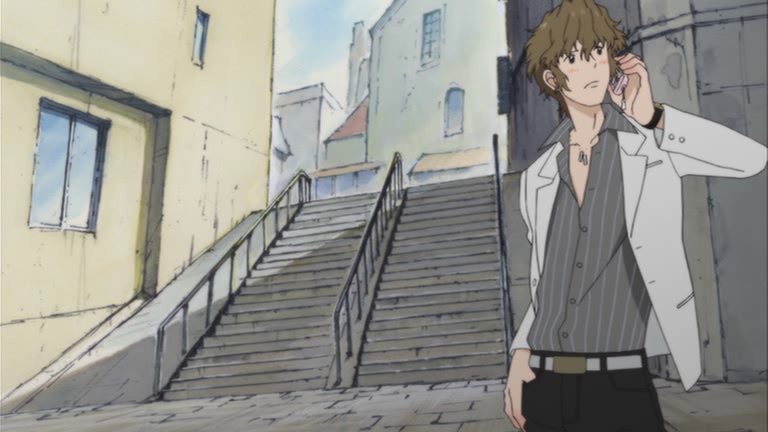 Shiotani’s own early I.G credits included Le Chevalier D’Eon and Blood+. His director debut, the romantic Tokyo Marble Chocolate followed in 2007. Celebrating Production I.G’s twentieth anniversary, it tells a romantic story twice over, from two different points of view. Moving to features, Shiotani was the storyboard artist and animation director on Oblivion Island, where he contributed the sheep Cotton. Attendees of Scotland Loves Anime may have seen Shiotani’s first feature as director, Blood-C: The Last Dark. Combining supernatural monsters, urban realism and techno-thriller elements, it was a good training ground for Psycho-Pass.
Shiotani’s own early I.G credits included Le Chevalier D’Eon and Blood+. His director debut, the romantic Tokyo Marble Chocolate followed in 2007. Celebrating Production I.G’s twentieth anniversary, it tells a romantic story twice over, from two different points of view. Moving to features, Shiotani was the storyboard artist and animation director on Oblivion Island, where he contributed the sheep Cotton. Attendees of Scotland Loves Anime may have seen Shiotani’s first feature as director, Blood-C: The Last Dark. Combining supernatural monsters, urban realism and techno-thriller elements, it was a good training ground for Psycho-Pass.
Before joining I.G, Shiotani had grown up with Ghibli, and also the paintings of his father (who died when Shiotani was one). Shiotani was especially fascinated by the French animation Fantastic Planet and the landmark Gainax anime, Wings of Honneamise, released by Anime Limited. Interviewed on the Production I.G website, Shiotani cited Honeamise’s “unique world reconstructed in every detail, those astounding backgrounds, the battle sequence at the end and the dramatic rocket launch. I was so impressed with that perfect combination between pictures and story, and I can say that movie is still inspiring me today.”
A voluble, entertaining speaker, Shiotani clearly isn’t constrained by PR scripts; the Production I.G site describes him as “a naughty boy inside.” For example, he suggests the key to advancing in anime is hard drinking as much as hard work. “I don’t know how much you’re aware of the Japanese drinking culture, but you have to do it almost as an obligation. It’s something that people in the higher echelons will do very often and they will drag the lower members out with them. When I had just joined [the studio], I’d be dragged out every single day drinking with the bosses. Thanks to that, I’m now a director.”
Perhaps also thanks to that, Shiotani is a night owl. He sometimes comes into the I.G office at one in the afternoon, but then works to 3 or 4 the next morning. However, Shiotani has no time for the image of the director as a visionary, an aloof auteur. He stresses the importance of communication with the team under him, and with the producer marketing his product. A director running wild ignores the people who bought the idea of the anime in the first place.
However, Shiotani also says TV anime has more room for experimenting than movies. A film must be made impeccably, every frame to the highest standard. That’s impossible with a TV series, where some things must be prioritised over others, and experimenting is viable. Shiotani also acknowledges an anime doesn’t just need to appeal to audiences, but to animators.
“There are about 4,000 people who can be considered animators in Japan,” Shiotani says. “About two hundred of them are really talented; everyone is fighting over them. If you make a really interesting property, more people will want to be on it. Those two hundred people want to work on what they feel is interesting.”
As for writers, Shiotani mentions that manga authors give secret ‘spoilers’ to the studios adapting their work. For example, he says Hajime Isayama has told the makers of the Attack on Titan anime how the story will end (the anime is made by Studio WIT, formerly part of Production I.G until it went independent). Shiotani’s own writer collaborators include two big names on Psycho-Pass: Gen Urobuchi (Puella Magi Madoka Magica, Fate Zero) and Tow Ubukata (Mardock Scramble, Ghost in the Shell Arise).
“Urobuchi is whiskey and Ubukata is sake,” Shiotani declares. “Urobuchi has an impact and cuts you down; Ubukata makes you feel real good, then kills you. Urobuchi has the start and goal, but he doesn’t plan out the middle of the story; how he goes depends on his mood. Ubukata is a detail person; he maps out the start, middle and ending.”
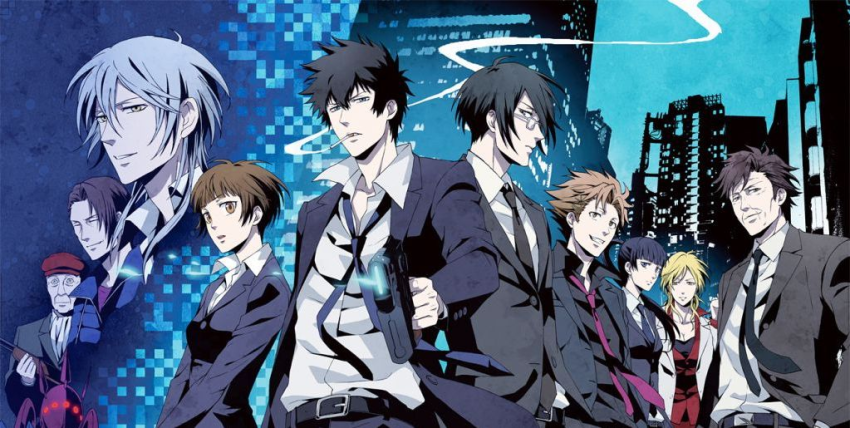 Although Psycho-Pass is often linked to Production I.G.’s previous hit, Ghost in the Shell, Shiotani argues they’re different in how they portray the relationship of humans to technology. Ghost in the Shell has virtual realities and digital spaces; in Psycho-Pass, the interface between people and technology is much more physical, gorily so. But what about the encroachment of virtuality and CG on animation? After all, Urobuchi was involved with the CG Oblivion Island.
Although Psycho-Pass is often linked to Production I.G.’s previous hit, Ghost in the Shell, Shiotani argues they’re different in how they portray the relationship of humans to technology. Ghost in the Shell has virtual realities and digital spaces; in Psycho-Pass, the interface between people and technology is much more physical, gorily so. But what about the encroachment of virtuality and CG on animation? After all, Urobuchi was involved with the CG Oblivion Island.
“Looking at the long term,” Shiotani says, “the quantity of hand-drawn animation will probably go down, because CG animation is much easier to make. At this point, CG can’t go into the same detail as hand-drawn animation. Computers do action scenes really well, where things move really fast, but when it comes to the human expressions – for example, a bit of crease on clothing, or a very slight expression – that’s something that hand-drawing can do really well.
“However, people are getting more used to watching computer-based animation,” Shiotani continues. “If something is lower in quality, there’s an impetus to improve that, so maybe in the long-run, we’ll see CG animation of much higher quality than now. In any case, they’re two different things– one is hand-drawn, expressed in two dimensions, whereas the other is basically three dimensions translated into two. They’re different things, but they’ll probably be there side by side.” He mentions he would like to make an anime that was only possible in hand-drawing.
Shiotani also notes changes in how people watch anime in Japan, and who watches. “Kids don’t watch anime the way they used to,” he notes, pointing to how an anime like Doraemon used to be much more of a shared experience. Today, even a studio synonymous with shared family viewing, Ghibli, seems to be ending. “These days, there’s less chance to make things targeted to kids,” he worries. “It’s a shame.” Even as the director of Psycho-Pass, Shiotani plainly wishes there were more openings in anime for child-friendly creations. For fluffy sheep, for instance, or unruly miniature donkeys.
Andrew Osmond is the author of 100 Animated Feature Films. Tokyo Marble Chocolate is released by Anime Limited in May 2017.
Psycho-Pass 2 and Psycho-Pass The Movie are available now from Anime Limited.
Leave a Reply